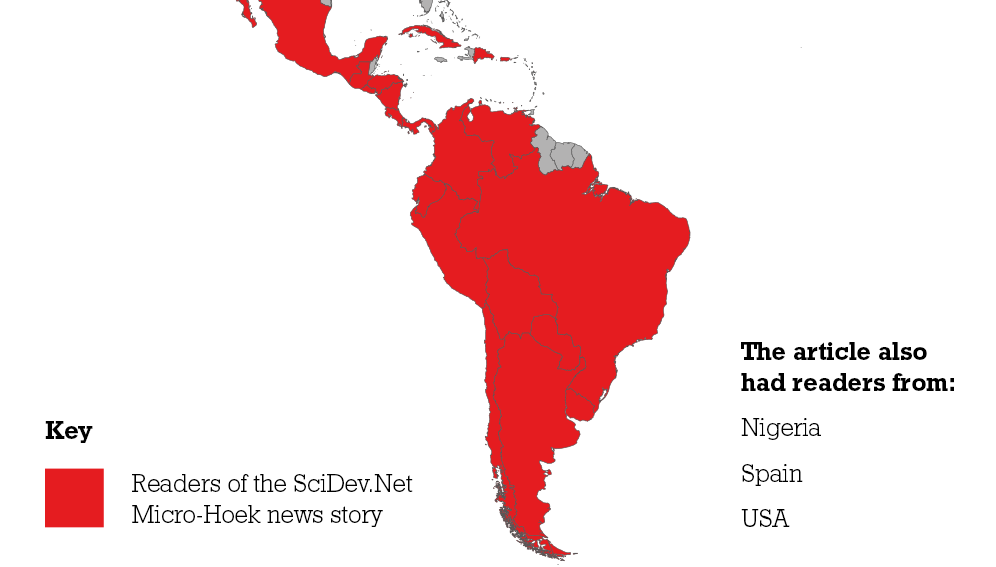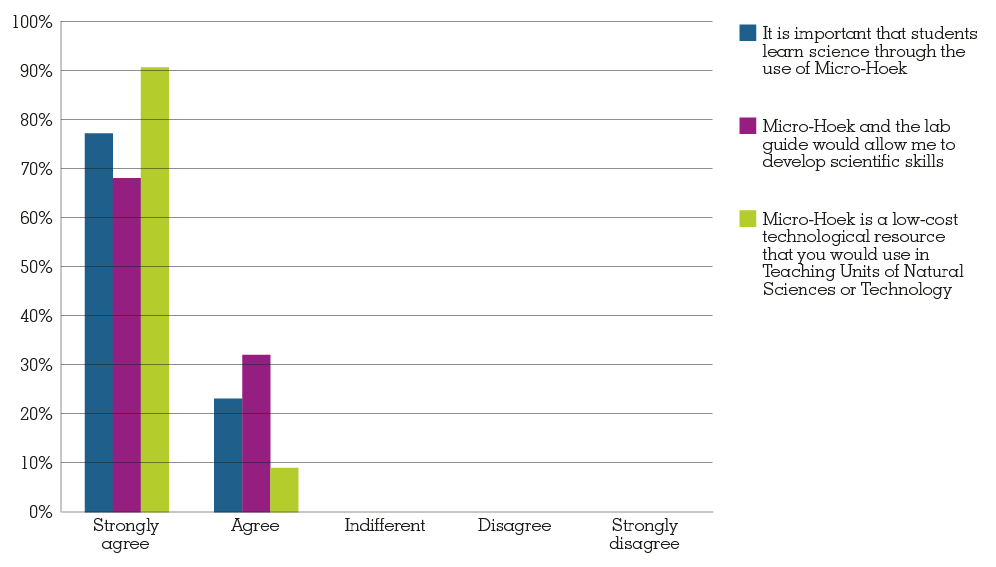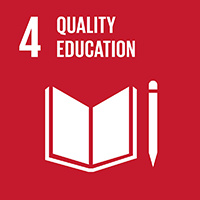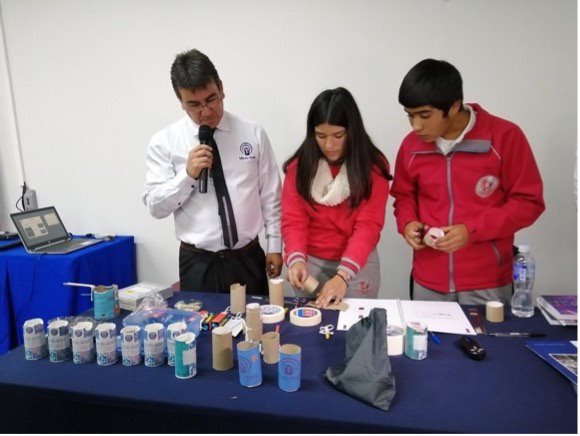Send to a friend
The details you provide on this page will not be used to send unsolicited email, and will not be sold to a 3rd party. See privacy policy.
In brief: The prohibitively high cost of microscopes in Latin America means many schoolchildren will never use one in the classroom. Scientists from the University of La Serena in Chile created a device that turns any cell phone with a camera into a powerful microscope using only electronic and household waste. SciDev.Net published a story about the technology, disseminating knowledge about the device’s construction manual across Latin America.
Why it matters: Teachers have access to the technology’s construction and usage manual enabling them to create their own microscopes and help school children see, first-hand, cellular biology in action, increasing their knowledge of and interest in science.
The big picture: The technology can benefit schoolchildren worldwide, reducing the inequality gap, since the device can be built for less than US$2 using only waste products.
By the numbers: According to UNESCO (the United Nations Educational, Scientific and Cultural Organization) the number of primary and secondary school students in Latin America and the Caribbean is 128,500,000,[1] which gives a sense of the number of children that could benefit from the Micro-Hoek technology.
Background
In Chile, the average school microscope costs approximately US$331. Schools in poor and remote parts of the country cannot afford them, meaning microscopes are in short supply; only a small number of children will be able to use one in the classroom. Some students reach university having never used a microscope at all.
Edgardo Mundaca, an ICT technician at the University of La Serena in Chile, said he was shocked to learn that students coming from rural schools had never used microscopes due to their high cost. “Contents such as cells were taught only with books or images,” he said.
Mariano Rodríguez, PhD candidate at the same university, said: “Eighty-eight per cent[2] of the schools in Latin America do not have a laboratory implementation.[3] This means that there is a low scientific literacy.”
Mundaca and Rodríguez worked to address the low number of microscopes in schools, creating the Micro-Hoek, a device that can turn any cell phone with a camera into a powerful microscope with at least 60x magnification using only electronic and household waste. The Micro-Hoek requires an LED light (US$0.63), a CR2016 3-volt battery (US$0.57), cotton elastic and adhesive tape, meaning the cost per unit does not exceed US$2.
What action did SciDev.Net take?
In 2018, SciDev.Net Regional Coordinator for Latin America Luisa Massarani heard about the microscope technology from Paula Leighton, a journalist. Leighton pitched her story to SciDev.Net and another news outlet, but only SciDev.Net followed it up.
SciDev.Net Deputy Editor Zoraida Portillo said: “Science journalism usually focuses on university-level research, so you don’t see many school stories, but this was such an important discovery for schools in Latin America, we decided to commission an article.”
Leighton interviewed inventors Mundaca and Rodríguez, who had made the technology freely available online, enabling any teacher or student wanting a microscope to build their own. Their goal: to get more microscopes into school science classes in low-income countries.
On 12 December 2018, SciDev.Net became the first international news outlet to publish an article about the Micro-Hoek under the title Manual teaches how to turn the cell phone into a microscope. SciDev.Net drew attention to the technology’s construction and usage manual, available for free to anyone who wanted to download it.
That month, the article quickly became the most read on the website, with unique page views of 3,431. On Twitter, it had the third highest number of organic impressions (2,538) and the highest number of interactions (109).
What was the impact of SciDev.Net’s action?
The SciDev.Net article shared the Micro-Hoek technology across Latin America. Teachers discovered a cost-effective way of building a powerful school microscope, benefiting schoolchildren from nine to 17 years of age.
According to the creators of Micro-Hoek, SciDev.Net’s ability to reach the international public was, “very helpful”. They added: “It allowed us to disseminate the construction manual and the Micro-Hoek prototype throughout Latin America. For example, it has been built in Mexico, Paraguay, Argentina, Colombia and, of course, in Chile.”
Teachers across Latin America contacted the inventors to share their praise for the technology and its publicising through SciDev.Net.
“In other Latin American countries, thanks to SciDev.Net, many school students are benefiting,” said Professor Matías Maureira, biology and natural sciences teacher, Penuelas School, Chile.
“This has made it possible to overcome the ‘leap of faith’ that the student makes of believing what the teacher says when he or she cannot visualise it,” said Raúl Paz, physics teacher, Hermano Hermas de Bruijn School, Argentina.
According to its creators, the technology was used successfully in 2020 with families in quarantine participating in constructing the device to observe cells. “The greatest impact was during the pandemic, since the teachers included Micro-Hoek in their virtual classes, and it was a complete success,” they said.




Photo credits: © Edgardo Mundaca and Mariano Rodríguez
Additional information:
The inventors, together with teachers from Argentina, collected information about the device and its use among schoolchildren and teachers. In a sample of 23 primary school teachers and 62 fifth- and eighth-grade students, they obtained the following results:



Relevant SDG:



References
[1] https://data.worldbank.org/indicator/SE.PRM.ENRL?end=2019&locations=ZJ&start=1970&view=chart
[2] 88% of school science laboratories in Latin America are not adequately equipped (Cabrol and Székely, 2012). Students in the region are ranked in the bottom third of the Program for International Student Assessment (PISA) in science (Bos and Elías, 2016).
[3] Laboratory Implementation refers to the basic equipment in a school’s science laboratory: beakers, flasks, microscope, pipettes, petri dishes, scales, slides, test tubes, thermometers etc.


